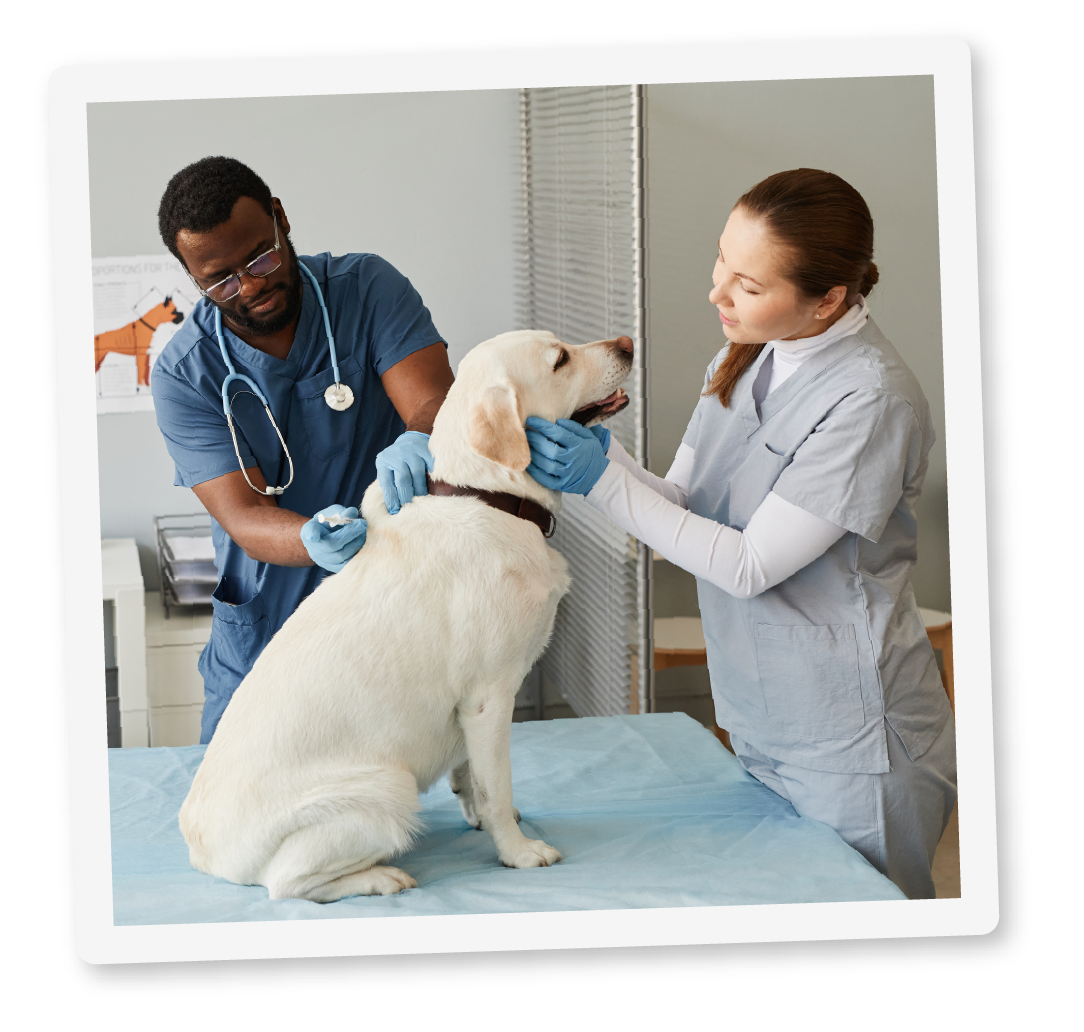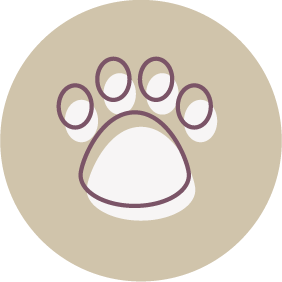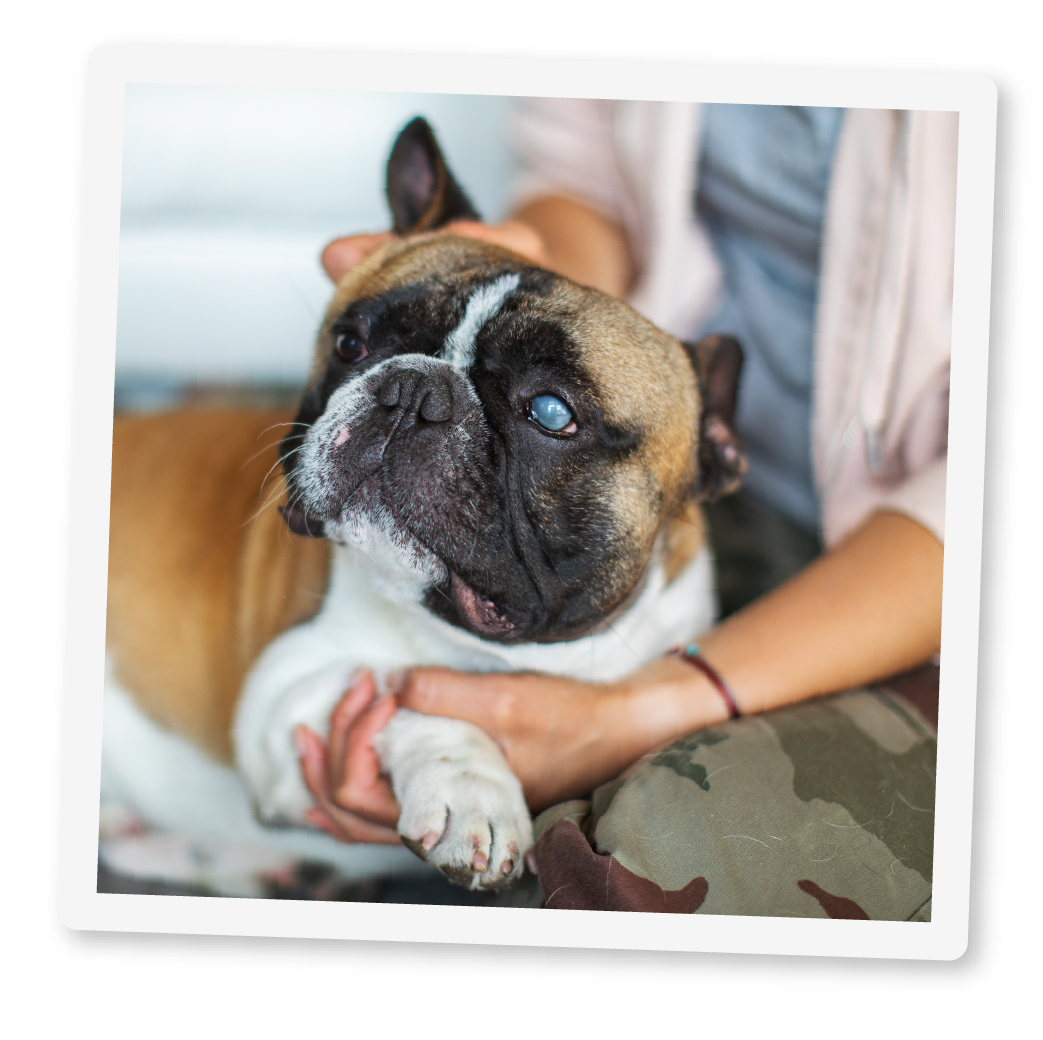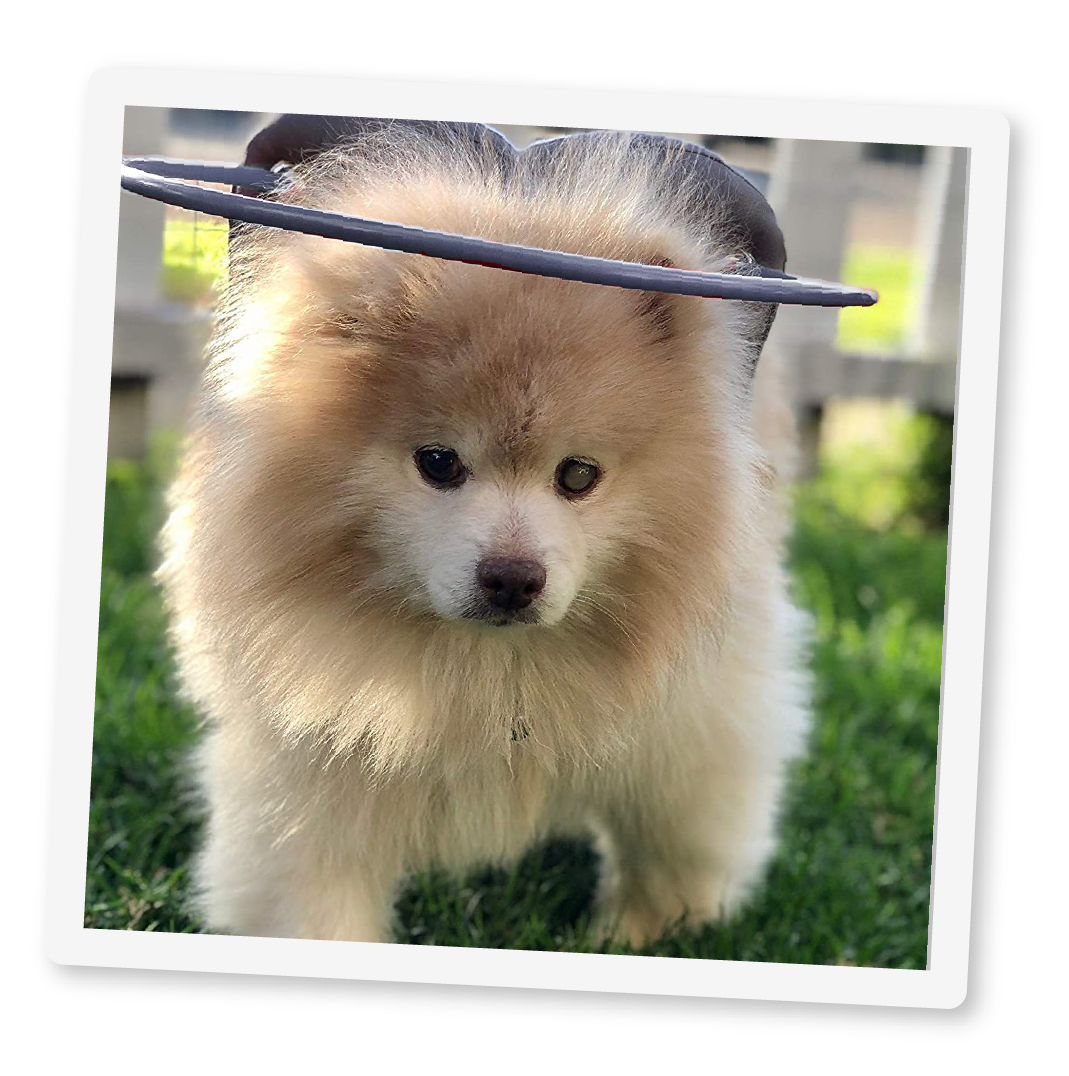Effective
Strategies
for Creating a Good Life with a Blind Dog
We all wish our dogs could simply sit us down and tell us exactly what is wrong with their bodies - what hurts, what aches, what isn’t working.
But since that isn’t possible, we’re thankful that there are certain signs that can help us determine if our dog’s vision is declining, or if it has disappeared altogether. Some are very obvious and others more subtle, but all are red flags that something is wrong and needs to be addressed.
So what do you do if your dog is showing signs of vision loss?

If you’ve noticed any of the above symptoms in your dog, the first step should be a visit to the veterinarian.
Because many of the conditions that cause vision problems can be painful (think: eye pressure and chronic migraines), it’s extremely important to get the correct diagnosis and ongoing treatment plan. The goal is to effectively manage the underlying condition to minimize further risk and restore the dog’s comfort.
While some common eye conditions can cause vision problems in dogs including cataracts, glaucoma, and infections, other conditions can also cause blindness in dogs including diabetes, tumors and brain disease. SARDS - Sudden Acquired Retinal Degeneration Syndrome - is a rare condition that causes sudden and irreversible loss of eyesight due to changes in the retina.
Although old dogs can have vision problems, don't assume that any loss in vision is simply due to aging. It could also be a sign of another, more serious problem. Keep in mind that early treatment may be able to reverse vision loss, so always speak to your vet if you have any concerns.

Without eyesight, it’s difficult for your dog to know where dangers such as sharp edges, staircases and other hazards are located.
That’s why it’s so important to examine your home from your dog’s point of view. To identify what needs to be padded, cushioned or gated off, get down on all fours and crawl around your house looking for things that could cause injury, anything they could bump into, get stuck in or fall down. Then it’s time to get out the corner protectors and baby gates to create a safe environment for your dog.

Your dog will feel safer and more confident if it can reliably predict where things are in the house.
By keeping your home clean and having everything stay in its place, you will be helping to keep your dog safe and also minimize disorientation and confusion.
Once you have arranged the furniture in a way that is best for you and your dog - and covered all the sharp corners - try not to make any changes. Likewise, keeping their bowls, toys, beds and crate in the same location will help them navigate their home confidently. Objects such as toys, shoes and clothes that are left on the floor can be challenging for your dog and create a tripping hazard. Likewise, if chairs aren’t pushed in or doors aren’t closed or opened in their normal fashion, your dog could get injured or disoriented.

Many dogs find safety and security in having a smaller environment they can call their own.
Be it a crate, a den or a small room, your dog may find great comfort in knowing they have a calm, quiet place where everything feels and smells the same. This is especially important in times when you are away from home or at night when your dog could otherwise get into a tricky situation.


A predictable schedule can offer consistency and comfort to a blind dog.
Following the same walking route, going to the same dog park, and using the same door in and out of the house can all help them find their confidence. Similarly, following the same feeding, training and potty break schedule can help them feel secure throughout their day.

Both in your house and in any new location you visit, it’s important that you walk with your dog on leash through the environment.
Dogs who can’t see will map out the location by using their other senses, namely smell and touch. By doing this alongside your dog, you are offering your support, keeping them safe and building their confidence. The making of this ‘map’ may take time, so be patient. In many cases, dogs can create such a good map that they will navigate a space as well as any seeing dog.
Muffin’s Halo is a blind dog halo that helps your dog notice obstacles in the way through sound and vibration. Dogs catch on rather quickly, helping them build confidence while learning to navigate their surroundings.
There are three circumstances when Muffin’s Halo is the ideal navigational tool for a blind dog:

Stairs can be tricky. Until your dog can go up and down the stairs with confidence, it’s important to use a baby gate to restrict access and minimize the risk of a fall.
In order to reintroduce your dog to the stairs, first put your dog on a leash. This communicates to them that you are there and that they are safe. Then stand in front of them - a step or two above or below - and place a treat just out of their reach. If they are hesitant to move, do not pull on the leash. Rather place your hand under their body and gently move them in the right direction.
Patience and understanding is key here. Keep your training sessions short and positive. If one or both of you become frustrated, it’s definitely time to stop and try again later.

A dog’s nose is already a wondrously powerful thing, but many blind dogs have an even greater, more acute sense of smell.
We can take advantage of this to help them navigate. Using scents or pheromones in different parts of the home may be helpful for helping them find specific places, particularly if used at corners or junctions in the home.
Scent can also help them find comfort and joy. Toys and blankets that have a familiar smell may provide comfort throughout the day, during stressful times or while traveling. You can also help your dog engage in play by rubbing toys or balls with treats before throwing them to help your pup retrieve them.
There are so many ways you can help your dog orient themselves and navigate their surroundings through the use of sound. Here are just a few:


Trial and error is often the name of the game when it comes to your dog mapping their environment.
To do this effectively, you need to allow your dog to explore on their own while maintaining an appropriate level of supervision and an eye on their overall safety. The goal is for your dog to gain confidence in themselves and their own abilities and not use you as their primary navigator. Picking up small dogs and carrying them around the house should be avoided since it prevents the pet from mapping the home and can be confusing to the pet if they are set down in another part of the home.

You are your dog's greatest protector. Keeping them safe includes ensuring that people who come in contact with them know they are blind and treat them accordingly.
Using a shirt, vest or bandana that reads “I’m blind” can help on walks and out in public. Be sure to tell people about your dog’s condition so they approach slowly and let your dog sniff them before petting. And in case your dog gets lost, it’s very important that you have updated the microchip information and purchased a tag for your dog’s collar that says “I’m blind.”